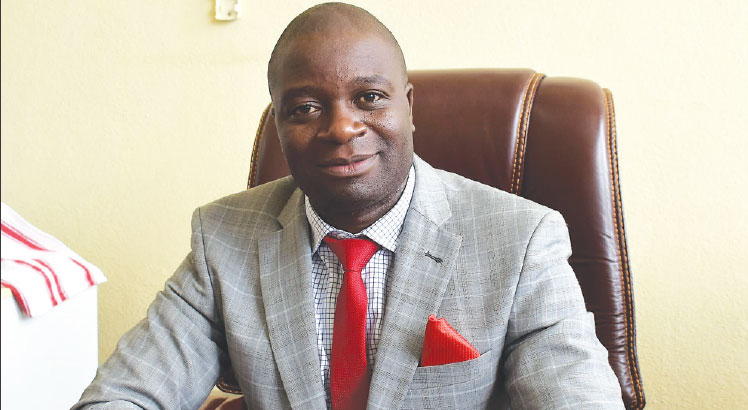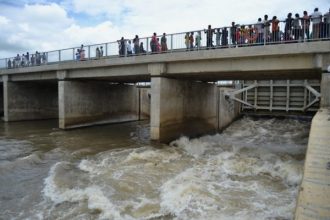Govt plays with K10bn
- Govt trains over 10 000 teachers, fails to recruit them
- Ministry suspends training programme
In the face of one of the highest teacher-to-pupil ratios, K10 billion in public funds may go down the drain as government is yet to recruit about 10 000 primary school teachers it trained between 2012 and 2014.

The teachers were trained through Open and Distance Learning (ODL) and Initial Primary Teacher Education (IPTE) programmes.
According to data sourced from Ministry of Education, Science and Technology (MoEST), government spent an estimated K666 800 per trainee teacher under ODL over a two-year period.
During the entire training period, each teacher was also getting a monthly allowance of K20 000.
Besides, further cost estimates show government was spending about K547 600 to train each of the 5 142 IPTE 8 teachers who, like their ODL counterparts, were receiving monthly allowances of K1 500 and K20 000 during training and teaching practice, respectively.
These figures translate into about K10.4 billion that government spent as direct costs to train the 10 600 teachers yet to know their employment fate since graduating in July last year.
However, the said amount excludes salaries for tutors and other operational costs at the five public teacher training colleges (TTCs) that participated in the programme, namely Blantyre, Lilongwe, Karonga, Machinga and Kasungu.
The money spent on training the idle teachers is 10 times more than the entire funding of K870 million allocated to the Ministry of Youth Development and Sports in the 2014/15 financial year for its programmes.
Beneficiaries of the training are bitter for being turned into freeloaders.
The aggrieved government-sponsored teachers graduated last year, but are loafing. The lucky ones have picked up temporary jobs as teachers in private schools.
Government established the ODL training method in 2010 to support the IPTE system, which has had an annual teacher output of 3 500 against a demand of 6 000.
The ODL initiative was expected to train an additional 3 500 teachers per year and since its inception, more than 20 000 teachers have graduated.
Several aggrieved teachers interviewed by The Nation expressed dismay over the development. They said they no longer feel the gains of the scholarships.
The Nation investigations show that government has literally abandoned 10 600 graduate teachers, representing 5 458 and 5 142 trained under the ODL 3 and IPTE 8 respectively.
MoEST acting spokesperson Manfred Ndovi confirmed the development in an interview.
He said government was yet to recruit the teachers due to challenges faced in incorporating the previous graduates into the system, especially adding them on the payroll; hence, the decision to delay recruitment of ODL 3 and IPTE 8 teachers.
Said Ndovi: “Due to that experience, we could not start recruiting and deploying them before sorting out the problems. We needed to ensure that all necessary arrangements were done before embarking on a new recruitment exercise.”
Reacting to the development in a separate interview, education rights activist Benedicto Kondowe described the situation as retrogressive and demotivating to the trained teachers.
Said Kondowe: “The situation is not only worrying but also demotivating. It is indicative of lack of strategic direction on the part of government to spend taxpayers’ money on human capital it cannot utilise.”
Kondowe, who is executive director of Civil Society Education Coalition (Csec), said with such development, the call to reduce the teacher-to-pupil ratio to 1: 60 as laid down in the National Education Sector Plan is becoming a tall order.
Observed Kondowe: “No wonder, some schools have a teacher-pupil ratio as high as one to 401 as is the case at one school in Liwonde, Machinga.”
He said the consequences of high pupil-teacher ratio are poor delivery of education and low pupil-teacher contact, which results in poor quality education.
“There is need to ring-fence the education budget and ensure that proper analysis is made to determine intake of teacher students.
“One way of doing this is by ensuring that the intake matches with the absorption capacity of government. ,” he advised.
Teachers Union of Malawi (TUM) president Chauluka Muwake said it was a pity that government was yet to recruit the teachers it trained when the pupil-teacher ratio in schools was already alarming.
He said: “Teachers are suffering in primary schools because of the harsh working conditions emanating from unrealistic teacher-pupil ratio. The situation is worse in rural areas where there is urgent need for more teachers.”
Statistics indicate that Malawi’s public primary schools have about five million pupils against some 59 000 teachers.
According to a handbook made public during the launch of ODL by MoEST, the system was expected to reduce the teacher-to-pupil ratio from 1:91 in 2010 to 1: 60 by 2013 and further to 1:40 by 2017.
In a related development, Ndovi has said the ministry has suspended the ODL programme to absorb the several idle teachers, including those set to graduate this November.
He said: “The suspension will run until the time our absorption system, which is currently low, will match with the training. We want to reach that point where the teachers will be recruited immediately after graduating.”
Currently, ODL 4 and IPTE 9 teachers are doing their teaching practicals also waiting to be recruited by government.





